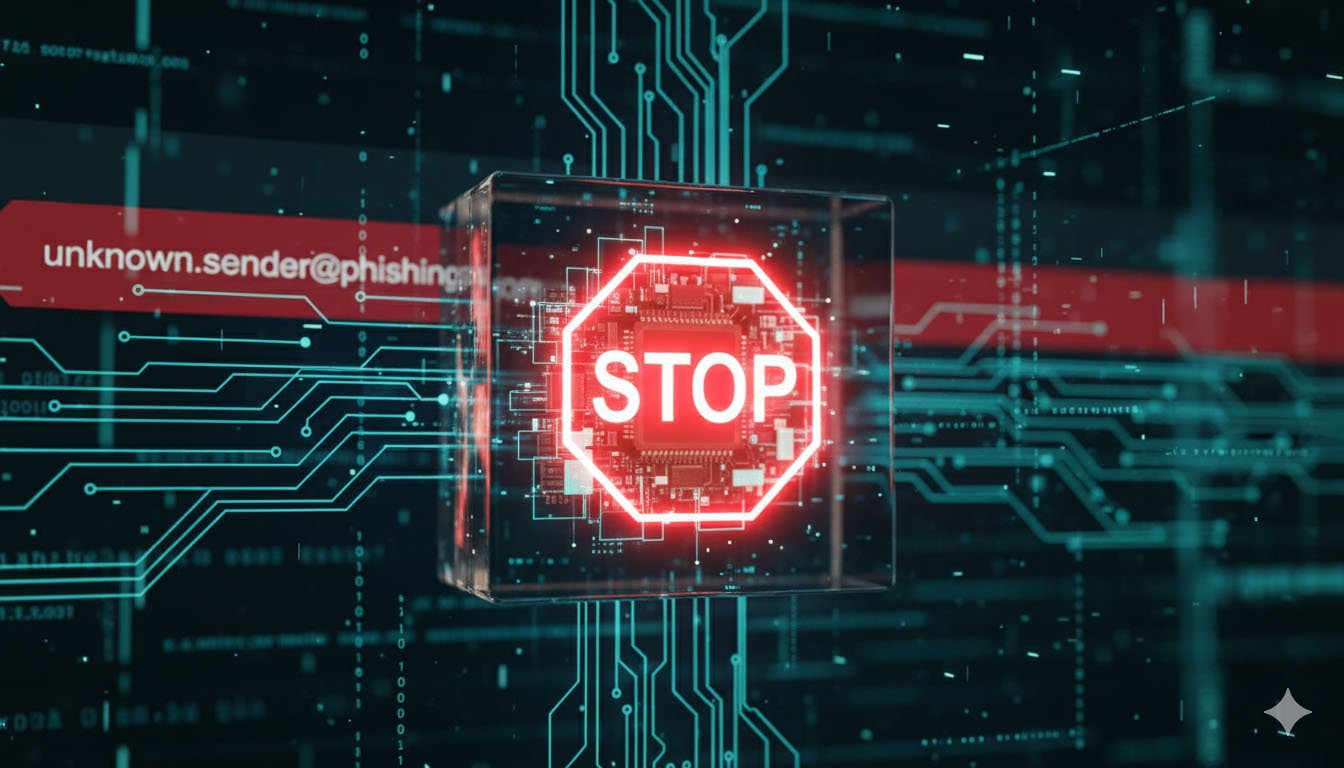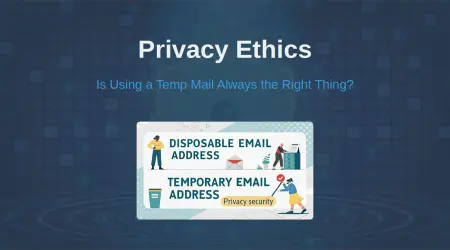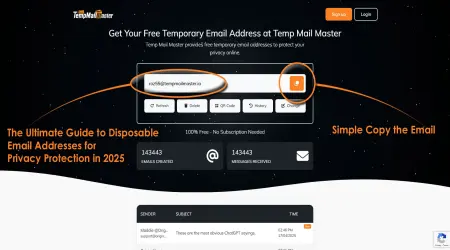

The Invisible Tracker: How to Detect & Defeat Email Tracking Pixels
The Invisible Tracker: How to Detect & Defeat Email Tracking Pixels in 2025
The Unseen Watcher in Your Inbox
Imagine opening a marketing email, glancing at the content, and moving on with your day. Unknown to you, a hidden 1x1 pixel has just alerted the sender to your activity, potentially revealing when you opened the email, your approximate location, device information, and even whether you forwarded the message. This invisible surveillance happens millions of times daily, often without explicit user consent.
Email tracking pixels represent one of the most pervasive yet least understood privacy threats in digital communication. These nearly undetectable trackers have evolved from simple marketing tools to sophisticated behavioral tracking instruments that map who you are, where you are, and how you interact with digital content. As privacy concerns grow and regulations evolve, understanding how to detect and defeat these invisible trackers has become essential for anyone who values their digital privacy.
In this comprehensive 2025 guide, we'll explore everything from the basic mechanics of tracking pixels to advanced protection strategies. You'll learn practical methods to reclaim your inbox privacy and prevent unauthorized surveillance from senders who may be watching more closely than you realize. Whether you're a privacy-conscious individual or a professional seeking to secure sensitive communications, this article provides the knowledge and tools needed to fight back against invisible surveillance.
What Are Email Tracking Pixels? Understanding the Invisible Threat
An email tracking pixel, also known as a web beacon or pixel tag, is a virtually invisible graphic embedded in HTML emails. Typically measuring 1x1 pixels and designed to be transparent or blend with the email's background color, these trackers hide in plain sight . When your email client loads this tiny image, it silently communicates with remote servers, transmitting data about your interaction with the message without your knowledge or consent.
The Evolution of Tracking Pixels: From Marketing Tool to Privacy Concern
Tracking pixels began as simple tools for marketers to measure email campaign effectiveness. Initially, they provided basic information like whether an email was opened. However, as technology advanced, so did tracking capabilities . Today's sophisticated pixels can detect:
- Exactly when and how many times you open an email
- Your approximate physical location via IP address mapping
- The type of device and email client you're using
- How far you scroll through the content
- Whether you forward the message to others
- Whether you're viewing emails in dark mode
What began as a simple marketing metric has evolved into a comprehensive behavioral tracking system that raises significant privacy concerns beyond commercial use.
How Tracking Pixels Differ From Cookies
While both are tracking technologies, pixels and cookies function differently:
Table: Tracking Pixels vs. Cookies
Unlike cookies that follow users across websites, tracking pixels are confined to individual emails but can be equally invasive in the data they collect .
How Email Tracking Pixels Work: The Technical Mechanics
Understanding how to defeat tracking pixels begins with comprehending their technical operation. The process represents a sophisticated form of digital surveillance that exploits basic email functionality.
The Lifecycle of a Tracking Pixel
- Pixel Generation: When an email is created in a marketing platform or CRM, a unique tracking pixel is generated for each recipient. This pixel contains a distinctive identifier code that links specifically to your email address in the sender's database .
- Email Deployment: The sender embeds the pixel in the email's HTML code, typically as an image tag that's either transparent, minimally sized, or hidden using CSS styling. The code looks something like this:
<img src="https://company-analytics.com/tracking/user123.gif" width="1" height="1" style="display:none"> - Email Delivery: The crafted email, complete with its hidden tracker, arrives in your inbox alongside legitimate content, completely undetectable to the naked eye.
- Triggering the Pixel: When you open the email, your email client processes the HTML code and attempts to load all images, including the tracking pixel. This action occurs regardless of whether images are visibly displayed to you .
- Data Transmission: Your email client sends a request to the server hosting the tracking pixel. This request contains technical information about your device and connection.
- Data Collection: The sender's server records this interaction, logging the precise time of opening, your IP address, device type, email client, and sometimes even your screen resolution .
- Notification: The email platform processes this data and alerts the sender that you've opened their message, often providing analytics through dashboards or real-time notifications .
What Data Do Tracking Pixels Actually Collect?
The specific information collected by tracking pixels varies by implementation but typically includes:
- Temporal data: Exact timestamp of opens and subsequent re-opens
- Location information: Approximate geographic location derived from IP address
- Device fingerprinting: Device type, operating system, and email client
- Engagement metrics: Number of opens and potential forwarding activity
- Technical specifications: Screen resolution and browser capabilities
While tracking pixels cannot access your files, read other emails, or monitor general browsing activity, the aggregated data they collect can build a detailed behavioral profile that reveals patterns about your daily routines, interests, and interactions.
Why You Should Be Concerned: The Real-World Impact
The implications of email tracking extend far beyond marketers measuring campaign success. The same technology enables more invasive practices that threaten personal and professional privacy.
From Marketing to Surveillance: The Expanding Use Cases
While originally designed for legitimate marketing purposes, tracking pixel technology has been adopted for more concerning applications:
- Corporate surveillance: Employers monitoring employee communications without explicit consent
- Political manipulation: Campaigns tracking engagement to micro-target voters
- Personal harassment: Individuals using pixel tracking to monitor specific targets
- Phishing preparation: Attackers confirming active email addresses before launching targeted attacks
Real-World Cases of Pixel Tracking Misuse
Several high-profile incidents highlight the potential for abuse:
- Superhuman (2019): The email startup faced significant backlash when it was revealed that their platform included tracking pixels by default, allowing senders to see exactly when, where, and how often recipients opened messages without their knowledge .
- Healthcare Privacy Breaches (2024): Kaiser Permanente disclosed that tracking pixels embedded in their platforms leaked personal data of 13.4 million patients to third parties including Google and Microsoft, demonstrating how pixels can expose sensitive health information .
- Class Action Lawsuits (2023-2024): Major retailers including Patagonia, Target, and Gap faced lawsuits in Arizona for allegedly using "spy pixels" to track recipients without proper consent, potentially violating privacy regulations .
These cases illustrate that what begins as simple analytics can quickly cross into invasive surveillance with real consequences for personal privacy.
How to Detect Tracking Pixels: Identifying the Invisible
Before you can defeat tracking pixels, you need to identify their presence. While designed to be invisible, several methods can reveal these hidden trackers.
Manual Detection Methods
For the technically inclined, some manual approaches can uncover tracking pixels:
- View email source code: Most email clients allow viewing raw HTML. Search for terms like "track," "pixel," "beacon," or image tags with unusual dimensions (1x1 or 0x0) .
- Analyze image links: Suspicious URLs often contain tracking-related terms or use redirect domains rather than linking directly to legitimate content hosts.
- Check for unusual formatting: Images styled with "display:none", "visibility:hidden", or positioned absolutely outside the visible area may indicate tracking elements.
Table: Common Tracking Pixel Patterns
Automated Detection Tools
Several browser extensions and email clients offer automated pixel detection:
- Browser extensions: Tools like Ugly Email or PixelBlock can identify and block tracking pixels in webmail interfaces .
- Privacy-focused email clients: Applications like Canary Mail include built-in detection that alerts users to potential tracking attempts .
- Email privacy services: Providers like Proton Mail automatically scan for and neutralize tracking pixels before they reach your inbox .
While not perfect, these tools provide a first line of defense against the most common tracking techniques.
How to Defeat Email Tracking Pixels: Complete Protection Guide
Now that you can identify tracking pixels, let's explore comprehensive strategies to neutralize them. From simple settings adjustments to advanced technical solutions, these methods provide multiple layers of protection.
Technical Blocking Methods
1. Disable Automatic Image Loading
The most effective defense against tracking pixels is preventing them from loading in the first place. By disabling automatic image loading, you stop pixels from communicating with their servers. Here's how to implement this protection across major email clients:
- Gmail (Web): Access Settings > See all settings > General > Images > Select "Ask before displaying external images"
- Outlook (Desktop): Go to File > Options > Trust Center > Trust Center Settings > Automatic Download > Check "Don't download pictures automatically"
- Apple Mail (macOS): Navigate to Mail > Preferences > Viewing > Uncheck "Load remote content in messages"
- Mobile Clients: Both Gmail and Apple Mail apps include similar options in their settings to prevent automatic image loading .
2. Use Plain Text Mode
Switching your email client to plain text mode is one of the most effective tracking countermeasures available. Since plain text emails don't contain HTML or images, tracking pixels cannot function .
In clients like Thunderbird, you can permanently set the default view to plain text (View > Message Body As > Plain text), or selectively view suspicious emails in plain text to avoid triggering trackers while maintaining rich formatting for trusted senders .
3. Employ Privacy-Focused Browsers and Extensions
While standard privacy browsers don't specifically block email tracking pixels, several specialized extensions can help:
- PixelBlock: Specifically designed to detect and block email tracking pixels in Gmail
- Ugly Email: Provides visual indicators for tracked emails and prevents pixel loading
- Mailvelope: Brings encryption to webmail while blocking tracking elements
Privacy Tools and Services
1. Switch to Privacy-Focused Email Providers
Several email services prioritize privacy with tracking protection built directly into their platforms:
- Proton Mail: Blocks tracking pixels by default and won't load remote content without explicit permission
- Tutanota: Automatically protects against trackers and offers end-to-end encryption
- Fastmail: Includes configurable privacy settings to block remote images
These providers often include additional privacy benefits like enhanced encryption and minimal data collection policies.
2. Utilize Email Forwarding Services
Services like SimpleLogin or DuckDuckGo Email Protection create unique email aliases that forward to your primary inbox while stripping tracking pixels and other potentially harmful elements . This approach provides an additional layer of abstraction between your real email address and senders.
3. Implement Advanced Technical Solutions
For maximum protection, consider these advanced approaches:
- VPN Services: Mask your IP address, preventing accurate location tracking even if a pixel loads
- Custom Domain Routing: Use your own domain with privacy-focused providers to maintain control over your email identity
- Separate Accounts: Maintain distinct email addresses for different purposes (primary, subscriptions, registrations) to limit exposure
Legal and Policy Protections
1. Leverage Privacy Regulations
Modern privacy regulations provide some protection against unauthorized tracking:
- GDPR (EU): Requires explicit consent before tracking EU citizens
- CASL (Canada): Mandates consent for commercial electronic messages
- CCPA/CPRA (California): Provides opt-out rights for data collection
While enforcement varies, these regulations establish important privacy rights that consumers can reference when challenging aggressive tracking practices.
2. Understand Platform Privacy Features
Major technology companies have implemented privacy features that partially address tracking concerns:
- Apple Mail Privacy Protection: Perhaps the most significant development in email privacy, this feature pre-loads email content (including tracking pixels) through proxy servers before delivery to your inbox. This means senders receive data showing the email was "opened" by Apple's servers rather than by you personally, effectively neutralizing open tracking while maintaining image display in emails .
- Gmail Image Caching: Google proxies images through its own servers, which hides your IP address from trackers but still confirms email opens to senders .
To enable Apple's protection: Go to Settings > Mail > Privacy Protection > Turn on "Protect Mail Activity" .
Frequently Asked Questions About Email Tracking Pixels
Can email tracking pixels really see what I'm doing on my screen?
No, tracking pixels cannot see your screen, access your files, or monitor other activities on your device. They function by logging when an email is opened and transmitting basic technical information about your device and connection. They are not capable of screenshots or monitoring beyond the specific email containing the pixel .
Are email tracking pixels actually illegal?
The legality of tracking pixels depends on your jurisdiction and how they're implemented. In the United States under CAN-SPAM, they're generally permitted without explicit consent, though transparency is encouraged. In the EU under GDPR, and in Canada under CASL, explicit consent is typically required before tracking can occur. The key legal differentiator is often whether proper disclosure has been provided and consent obtained where mandated .
Do tracking pixels work if I don't click anything?
Yes, this is what makes them particularly effective and potentially problematic. Simply opening an email is sufficient to trigger most tracking pixels, as the act of viewing causes your email client to load all images in the message, including the hidden pixel. No clicking or other interaction is required for basic open tracking to occur .
Can tracking pixels infect my device with malware?
Tracking pixels themselves are typically just tiny images and cannot directly install malware or viruses. However, they can be used to identify active email addresses for targeting with subsequent malicious emails. The primary risk is privacy invasion rather than direct system compromise .
How effective are Apple's Mail Privacy Protection and similar features?
Apple's Mail Privacy Protection is highly effective at preventing senders from knowing your actual open behavior and hiding your IP address. However, it's important to note that it doesn't technically "block" pixels but rather pre-loads them through proxy servers, creating false open data that protects your actual activity. Gmail's image caching provides partial protection by hiding your IP but still confirms opens .
Conclusion: Taking Back Control of Your Email Privacy
Email tracking pixels represent a significant but often overlooked privacy threat in our daily digital lives. These invisible trackers can monitor your interactions with emails, build behavioral profiles, and potentially expose sensitive information about your habits and location—all without your knowledge or meaningful consent.
As we've explored throughout this guide, effective protection requires a multi-layered approach:
- Technical defenses like disabling automatic image loading and using plain text mode
- Privacy tools including specialized email providers and blocking extensions
- Platform features such as Apple's Mail Privacy Protection
- Legal awareness of your rights under various privacy regulations
The battle for digital privacy is ongoing, and tracking technologies will continue to evolve. However, by implementing the strategies outlined in this guide, you can significantly reduce your exposure to unauthorized monitoring and reclaim control over your personal information.
Your inbox shouldn't be a surveillance tool. With knowledge and the right protections, you can ensure that your email communications remain private, secure, and free from unwanted tracking.
For more guidance on protecting your digital privacy, explore our related articles on secure communication practices and privacy-enhancing technologies here on TempMailMaster.io.
Written by Arslan – a digital privacy advocate and tech writer/Author focused on helping users take control of their inbox and online security with simple, effective strategies.






















